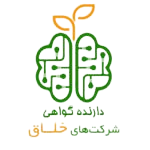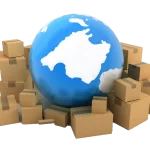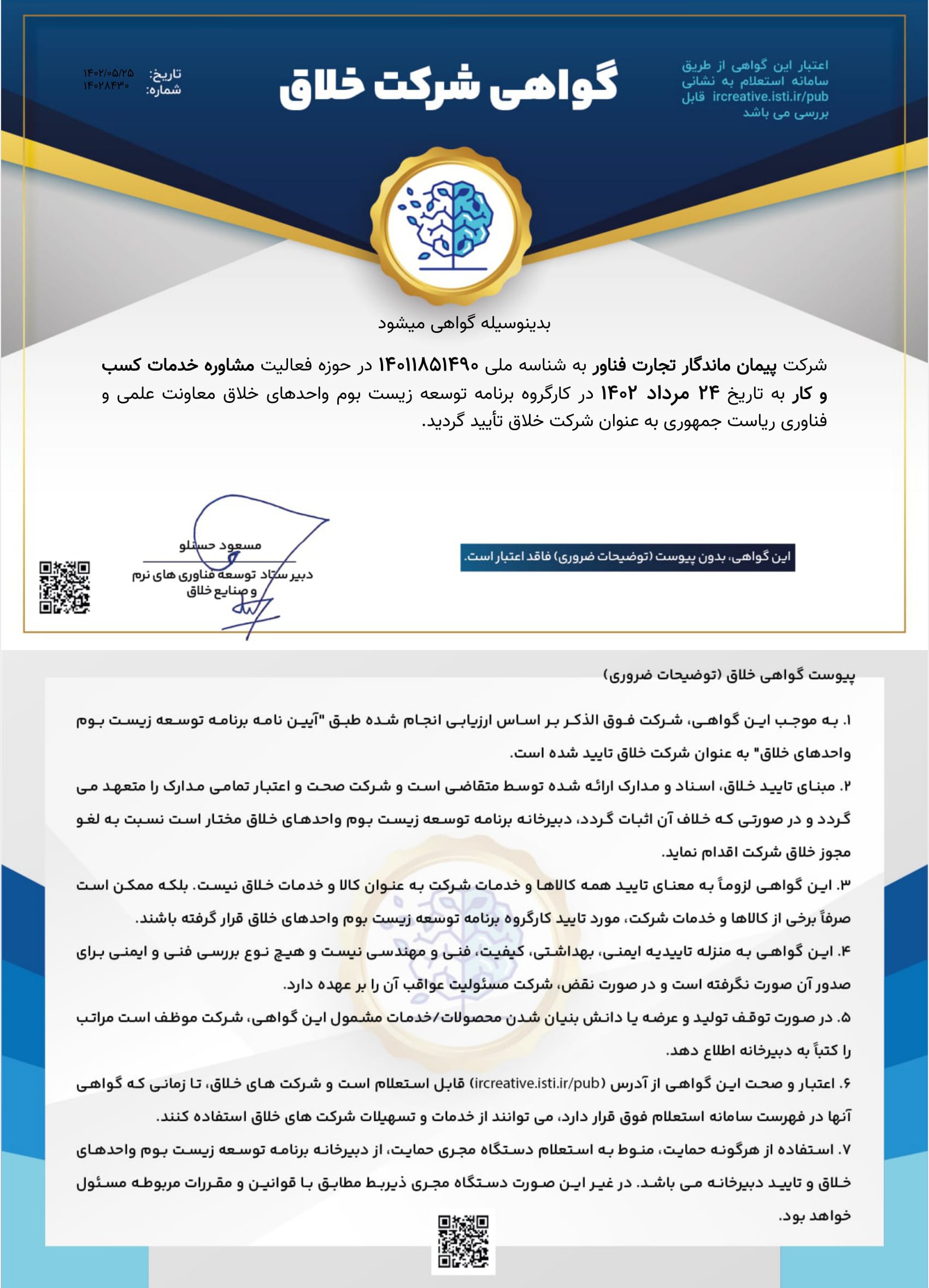Importing from Iran: The Opportunities
Importing from Iran: The Opportunities: Potential Export Comparative Advantage of Industry & Mine
1- Construction Materials
Iran has a long history in the production of construction materials and non-metal mineral products. Resistant materials suitable to regional and climaticImporting from Iran: The Opportunities requirements have been produced by traditional methods and used over the centuries.
During. recent years, production .and export of various. types of construction. materials with high. quality and. acceptable. standards .have commenced and found their. place in foreign .markets.
Iran has numerous advantages in this industry, based on access to ample raw materials, suitable mineral reserves, low-cost manpower and energy.
This industry, utilizing new technologies, has achieved high qualities during the development plans of the country. Production capacities have also scored significant increase in this branch of industry.
During the recent years, there has been a great deal of change in the construction materials industry. Some parts of the machineries and a great portion of construction material industry are manufactured inside the country; currently having been installed and utilized in different production units.
Building Sanitary Appliances
Compared to the tile manufacturing industry, this branch is new in the country but still has competitive advantages at foreign markets. The export of these products has commenced during recent years, targeting the neighboring markets. The quality and price of these products are competitive and producing agencies have competitive advantages.
Various Types of glasses
Iran is. capable of producing various. types of glasses .and mirrors .for various uses, different. in thickness, color .and design, in Securit. forms, including simple glass, ordinary. and patterned, various. types of colorful .non-reflexive .glass, sun-reflect .glass, reflect .glass, double-shell .glass and curved .
Furthermore, the Iranian companies have recently successfully produced various types of glass through the floating method.Importing from Iran: The Opportunities
Cement and Clinker
The production capacity of cement and clinker industry is increasing every year. There are comparative advantages in the country, among which one can mention availability of raw materials required by the industry, manpower, experienced management and low-cost energy. Cement production plants in Iran enjoy competitive advantages in neighboring countries, and especially clinker is an intermediate product which may be exported to neighboring countries. Export of cement has commenced during the recent decade.
Cement Pipes and Sheets
In view of the ample production of cement (as a main ingredient of this industry) in the country, this branch of industry is also advantages and has exports capacities.Importing from Iran: The Opportunities
Construction Stones
Iran has very rich reserves of construction stones. The wide range of construction stones including granite, marble travertine, and many other types of stones, has left the country with high potentials for local use and also for the purpose of export.
There have been technological changes in stone processing and new technology has been deployed in some mines and stone processing units, in which the most modern European-made machinery are utilized.
Different Types of Doors and Windows
Iranian companies, by deploying the most updated and modern machinery and technology, have been successful in production of various types of wood, steel and aluminum doors and windows including anti-theft doors, sliding and hinged doors and windows, double-shell windows and cabinets in different forms and designs, according to the latest models of the world.Importing from Iran: The Opportunities
Chemicals Used in Construction Industry
Iranian companies having comparative advantages, such as availability of the required materials and deployment of the modern technology, have produced different types of paints, various concrete additives, different adhesives, concrete anti-freeze and molding oil and variety of adhesives for the working. These products have obtained national standards and ISO series standards as well as quality standards and have been exported to the Persian Gulf region, Central Asia and African countries as well as elsewhere in the world.
Hygienic Services
Iranian companies, benefiting from today’s world technology and most advanced machinery, have successfully produced high quality hygienic services such as hygienic chinaware, different types of sinks made of steel sheet and polymer materials and glazed sinks as well, which are produced according to sanitary principles. Some of the most important products of these Iranian companies are: bathtub in various forms, hygienic services, towel rails in different forms, soap holders in various forms.
Other Construction Materials
Iranian companies, in addition to production of various types of facing brick and internal brick, blocks and pan tile, mosaics, concrete products, thermal and humidity insulators, have been successful in exporting the following high quality, standard products to the member countries of the ECO and the C.I.S., African countries and Persian Gulf regional countries.
2- Production History of Tiles & Ceramics In Iran
Introduction:
Generally speaking tiles and ceramics industry is as old as the history itself and deeply rooted in the nations’ cultures. In fact, their varied designs, colours and fine arts decently reflect the historic traditions, customs and rituals of their makers who have now been reduced to dust.
Some Believe that this industry has originated from Egypt, however the supporting evidences certify that it is an Iranian native art. Namely, the oldest enamelled tiles found in ”Chaghazanbil” temple of the Khouzestan province which dates back to the 13th century B.C. shows the antiquity of this congenital art.
Also, another Iranian master piece is a tile inscription, showing a soldier, belongs to the Darius era of Achaemenian dynasty which is being preserved in the Leuvre museum of Paris. In addition to their cultural aspects’ the ancient peoples were doing business in tiles and ceramics as well as decorated potteries in the age of Sassanids.
Upon the advent of Islamic belief, most of Iranian artists who were aspired by the Islamic culture, started to develop new art crafts whose golden peak dates back to Illkhanian & Saldjughian ruling eras.
However, during the age of Safavid dynasty, Iran could develop the friendly socio-political ties with the Western Europe through which Iranian artists could visit the west and study European great artists’ works. The result of such combinations was taking advantage of the European designs and aspirations. since then this art has always been boosting up to the present time.
Due to the sharp demand increase, traditional ways of production were gradually replaced by industrial methods since the first mechanized plants went on stream in 1950s.
Production Rates of Tiles & Ceramics In Iran
Main Production centers are located in the provinces of Tehran, Isfahan, Ghazvin, Yazd, Shiraz, Khorasan and Gilan in which around many mechanized units are working at present.
Today, most of our production plants, availing of European technology (mainly Italian and Spanish), modern equipment, automated sorting systems, ample raw materials of high quality, such as ball caly, kaolin, sand, quartz, lime, dolomite, magnesite and glazers as well as skillful workers produce excellent products for export. It is noteworthy that Iran is endowed with 75% of the required high quality raw materials while the same ratio for Spanish is 50% only.
Compliance with the international standards have enabled the Iranian producers to obtain various distinguished international certificates, medals and rewards such as ISO14001 and ISO 9002 from SGS, Golden Statue for Construction from Spain, Golden Cup from Italy, and the quality management Certificate from France.
In most of the local factories, production process for dual-baking wall tiles and single-baking floor tiles are based on the European standards of EN159 – Group BIII and EN177 – Group BIIA respectively. More over, dual-baking floor tiles ad trice-baking decorative tiles are also produced in certain plants.
Tiles and ceramics are produced in a variety of designs and according to the customers tastes and specified orders in the forms of matte, glossy, glazed, unglazed, decorated bricks, tile bricks at the normal sizes of 10*20, 15*20, 20*20, 20*30, 25*25, 17*28, 33*25, 33*33, 33*45, 28*40, 40*40, 50*50, and 60*40 centimeters
3- MINES and METALS
Long strides have been taken by the government toward amendment of rules and regulations governing activities in the mine sector, such as approval of the Mine Act at the Islamic Consultative Assembly ,a move toward privatization of available mines,grant of the right of mine exploitation to non-government sector.
Durind the period of implementation of the two Development Plans, ownership of some mines have been transferred to the private sector and also some government mineral and industrial units have been privatized.Service and subsidiary mine sectors too,have moved in the course of privatization.In the meantime ,necessary licenses for exploration ,utilization and processing of minerals are awarded to applicants in the private sector,according to the Mines Act ,ang the role of the government is limited in this respect.
Generally ,most mineral industries and, from the view point of numbers most mineral units are the inclination of this sector to investment in mineral areas shows an increasing trend.In year 1995 ,from among the 2,450 mines in the country, 75% i.e. 1,850 mines were directly administered by the private and cooperative sectors.From the total mineral units in the country the management of 2.324 units(79.6%)of the total was private and 597 units (or 20.4%of the total)was under public administration.
Projects carried out by the private sector till 1996 include:Semnan Ferrosilica factory ,decorative stones processing,grantile tiles,kaolin washing, refractories, cast iron ingot production project,ferrmolybdenum factory,copper alloy production project, mineral powders processing and production(5 units), coal powder processing and production(1 unit), mica powder processing and production (1 unit),salt powder processing and production (9 units),stone poeder processing and production (6units),aluminium ingot production project ,silica powder processing and production (1 unit),magnesite(1 unit), sodium sulfate (3 units), sand blast silica and gravel (5 units), granulated stone (1 unit), industrial minerals processing (many units).
Regarding the ownership composition of utilizing companies, 59.8% goes to the private sector, 19.3% to the cooperative sector ,9% to foundations of public sector, and 11.9%to banks and government institutions.The added value of mines (not considering mineral and metal industries and the oil and gas sector) comprised some 0.6% of the country’s Gross National Product in 1996. Taking into consideration the added value of mineral and metal industries , the added value of the mines and metal sector would amount to about 4% for the same year.
4- Iran Handicrafts
Preface
Every nation’s set of handicrafts principally reflects their eco-systems characteristics which separate them from mechanical industries.fact, such fine arts are deeply rooted in religious faith, national traditions and the creativity of innovative individuals.
In other words, handicrafts and artifacts are credited by the crystalization of thoughts, faiths, beliefs and historical customs. In comparison, handicrafts play the same role as a comprehensive mirror, reflecting the past and present history.
History shows that industry and art are two mixed, concurrent and simultaneous phenomena that can be traced in all of the hand-made products disregarding their applications, prices, sizes and shapes. Likewise, the Persian fine arts history testifies that our people not only met their own requirements, but exported the artistic products to other countries as their cultural representatives.
The noble, delicate and genuine artifacts of Iran belong to the old world covering vast stretches of lands as far as the Indian sub-continent, Syrian art centers, Palestine, Caucasia, Sicily as well as other parts of the ancient Europe.
Actually speaking, an attractive varieties of over 150 handicrafts are certainly the most influential traditional arts of Iran of which even the simplest pattern and designs carries a meaningful and subtle massage from the rich culture and civilization of this very old land with 5000 years of proven track record. Such handicrafts are presented as precious gifts to the international visitors who avail of high taste and talent.
Today, we normally witness the exportation of worth of hundreds of millions of dollars from the developing countries to the industrialized world which in fact indicates that the western people appreciate the world’s cultural beauties and human values vis-à-vis their own industrial realities. Iran that has joined the World Crafts Council is quite capable of catering such humanistic spiritual needs due to her socio-economic delicate characteristics and historical craftsmen dexterity.
Besides the non-materialistic side of the fine arts, Iran routinely participates in the international handicrafts forums and displays her accomplishments made in the training of domestic craftsmen and explains about the state financial supports allocated for them to grow and develop more rapidly among the other third world competing countries
The General category of Iran’s handicrafts In 21 rows
1.Roodoozi(Exterior needle work)
Cheshmeh swing-Yaracr sewing-mirror sewing – Shak sewing – Raw wool- botton sewing – Bead sewing- Yalameh sewing- Turkman sewing- 40 Patch sewing- Badele sewing- Sarafi sewing- Bilish sweing- Ghazak sewing- Balooch sweing- Metal sewing- Hook weaving- Needle work- Khos sewing- Serme sweing- Braids making- Naghadeh sewing- Mamakan sewing- Pateh sewing- Gold sewing- Filigreed work- Zaghare sewing- Silk work- Flake sewing- Thread Trailing – Zarifsewing
2.Sewing work-(Knitting work)
Maghneh work- Barocade work- Velvet work- Kashmir work- Shar work- Blanket work – Jajeem work- Ahrami work – Daraee work- Shawl work – Silk work- Tag work – Neek work- Tarpaulin work- Barak work- Knitting work- Curtain work – Sajadeh work- Shamad work- Aba work- Areez work- Hook sewing- Pully work- Karbas work- Khorjeen work- Rend sewing.
3.Metal work
Chiseling- Engraving- Embossment work- Locking work- Jewelery fixing- Wood engraving- Knife Work- Gold- Leaf tooling- Warsaw silver work- Enameling- Turquoise work- metal statues- Sculp & urings.
4.Floor coverings
Carpets- Rugs- Matress- Table cloth- Felts- Gleech work- Sacheem work- Gabeh work.
5.Wood works
Inlaid work- Marquetry- Groove milling- Chessboard- Backgammons board- Wood sculptures- Fine ornamental- work- Wood painting/ Caligraphy- Burnt work- Musical instruments.
6.Straw/Plant Products
Pearl sewing- Bamboo weaving- Gergor work- Straw work- Straw work- Basket weaving- Straw furniture
7.Decoratings
Turqoise cutting- Embroidery with gold and silver- Jewellery fixing.
8.Glasses
Cutting in glass- Mirror cutting- Painting on glass- Glass work
9.Leather
Bags- Shoes- Frames- Painting on Leather- Caligraphy on Leather- Coats
10.Pottery – Ceramics
Decorated pottery vaults- Statues- Tiles of pottery- Vessles of pottery
11.Marine Products
Shells- Pearls
11.Painting
Papieh masheh- Miniature- Painting on wood, leather, glass,metalsLacquer
13.Shoes
Giveh works- Charough work- Seragi work
14.Print
Textile printing – Batik work- Kalaghe work
15.Gilding
Gilding of painting and calligraphy- Gilding the hair
16.Burning
Burning on leather, wood
17.Stone cutting
Sculpturings- Cutting stone into pots, plates, jars
18.Skin Products
Skin coats- Chogha work
19.nlaid works
Frames- Boxes- Pens- Sticks- Book case
20.Toys
Toys of cloth- Toys of wax
21.Musical instruments
Dulcimer- Setar- Tar- Tanboor- Tonbak- Ring- Sorna- Ood- Dohol- Balaban
Potential Export Technical & Engineering Services Consulting & Contracting Firms
The availability of local raw materials, rich mineral reserves, experienced man power have all collectively played crucial role in wining the international bids. It is noteworthy that Iranian consulting firms and contactors are active members of FIDIC which has certified their excellent engineering qualifications.
Iranian firms are fully. capable .the execution of .construction projects such .as building. roads, housing units, skyscrapers, tunnels, bridges, city planning, concrete. pouring and .soil excavation through making ..use of their technical .potentials .such as .specialized staff, soil. analysis laboratories, modern equipments .and machineries, efficient. hardware .and..software. We .may cite .those .successful. projects as the .designing .and .construction of “Yademan” telecommunication tower in Tehran which is of more than 300 stories and ranks the first in the Middle East. Also we can point out the international .achievements in. designing .and construction. of several. huge metal. bridges, concrete .bridges, highways .in India, Pakistan, Turkmenistan, Bangladesh, U.A.E., Kyrgyzstan and construction of an airport as well as a seaport in Pakistan.
According to the WTO statistics we can find that the total global trade value is 14472 billion dollars and the global service value is about 2710 billion dollars in 2006. However, 360 billion dollars of the latter figure relates to the Techno-Engineering services. Recorded export of Techno – Engineering services in the world have been expanded from 12.29 billion $ to 35.1 billion dollars during 1990 till 2003.
source:tpo.ir








